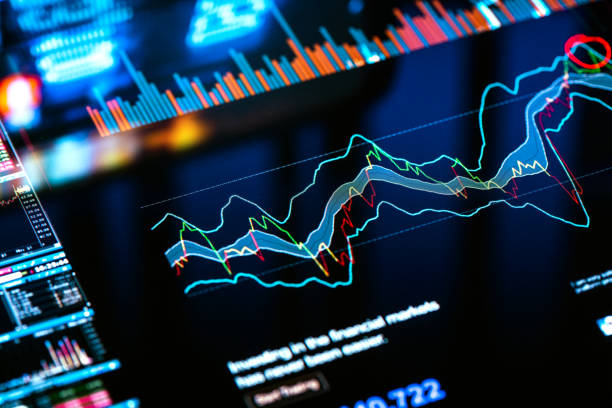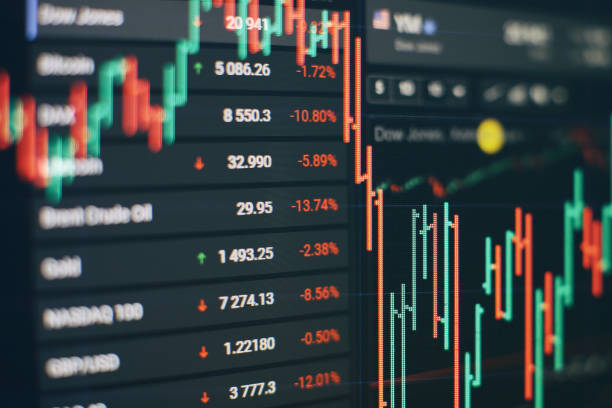Stocks are an investment into a public company however, investors and traders need to understand the different types of stocks that make up the stock market in order to make informed decisions. Stock types help investors decide on specific stocks to trade or assist with valuation methods either fundamentally or technically. This article will outline the following:
Why are stock types so important?
Different types of stocks every trade should know
Further reading on stocks and the global stock market
WHY ARE STOCK TYPES SO IMPORTANT?
Stock types are an essential component to a stock trader’s investing basis. Traders and investors need to know the distinction between different stock types. Knowing stock types are so important because it allows traders to deduce and select the correct stock for their personal financial goals and risk appetite.

THING TO KEEP IN MIND WITH STOCK TYPES
Because stock types and investor objectives are correlated, the following should be taken into consideration before selecting a stock type to trade: Risk appetite – higher risk appetite will point toward a more volatile stock whilst a lower risk appetite will highlight more consistent stocks
Voting rights– Common stock.
6 DIFFERENT TYPES OF STOCKS EVERY TRADER SHOULD KNOW
Stocks are categorized under different labels which allow traders to sift through stocks with ease making for more efficient trading. Below are the major stock types most frequently utilized by stock traders.
Common stock and preferred stock:
There are two main types of stocks including common stock and preferred stock. Although there are many differences between the two, the primary difference is that preferred stock generally does not give shareholders voting rights whilst common stock does. Both types of stock signify a form of ownership within the company which investors believe will appreciate in value.
STOCK TYPE PROS CONS
Common stock
Voting rights
Benefits of stock appreciation
Lower dividends if accessible
Last in line to receive disbursements after creditors, bondholders and preferred stock holders
Stock price and dividend may encounter greater unpredictability
Preferred stock
Steady and predictable dividend payments
Benefits of stock appreciation
Higher dividends if accessible
Shareholders have higher probability to recover some of the initial investment in the case of bankruptcy
Lower longer-term growth
Low trading volume – difficult to buy/sell shares
No voting rights
Stock market sectors:
According to the Global Industry Classification Standard (GICS), there are 11 broad stock market sectors that divide up the equity space:
Energy (e.g. Shell)
Materials (e.g. Valvoline)
Industrials (e.g. Caterpillar)
Consumer discretionary (e.g. Amazon)
Consumer staples (e.g. Coca-Cola)
Health care (e.g. Pfizer)
Financials (e.g. Goldman Sachs)
Information technology (e.g. Salesforce)
Telecommunication services (e.g. Verizon)
Utilities (e.g. NextEra)
Real estate (e.g. Simon Property Group)
Cyclical and non-cyclical stocks:

Cyclical stocks:
Cyclical stocks are stocks that react in conjunction with current economic conditions. This means that when economic conditions are favorable, these companies tend to perform well. Automotive companies are examples of cyclical stocks, as people tend to spend more on automobiles in good economic conditions.
Non-cyclical stocks:
Non-cyclical stocks are more contradictory in their reaction to economic conditions. These types of stocks perform well during periods of adverse economic circumstances. Companies that exhibit this type of behavior are those that provide products or services that are necessities regardless of good or bad conditions. Examples of these stocks include healthcare stocks.
Company size:
Market capitalization (market cap) is another common way to sort stocks. Market cap is the total market value of a company’s outstanding shares of stock. These stocks are then categorized into large-cap, mid-cap and small-cap shares.
Large-cap:
Market cap of $10 billion or more (e.g. Amazon)
Mid-cap:
Market cap between $2 -$10 billion (e.g. Yeti Holdings)
Small-cap:
Market cap between $300 million – $2 billion (e.g. Axos Financial)
Domestic and international stock:
Stocks can be divided into both local and international stocks. This is often designated by the company’s head office location. This is a less common way of looking at stocks as head office location may not always correlate to business dealings/sales as many companies have large portions of their dealings internationally. Therefore, it can be hard to decipher the company metrics solely on location.
Growth and value stocks:
Growth stocks:
Growth stocks are types of stocks that are perceived to have the capability of outperforming the stock market over time.
Value stocks:
Value stocks are types of stocks that are believed to be undervalued (trading below their ‘fair’ price) and should provide a positive future return.
Read up on ways to value stocks with our foundational trader’s guide to stock valuation !

TYPES OF STOCKS FAQ SECTION
Are types of stocks the same for global stock markets?
Stock markets around the world have largely the same designations as mentioned in the article above. This general framework allows for the ease of analysis across markets for stock traders. Although this seems miniscule, types of stocks are often overlooked/taken for granted by stock market traders and analysts. Without a standardized outline the complexity of stock analysis and comparisons across stock types and markets would be extremely difficult.
TYPES OF STOCKS: CONCLUSION
The different types of stocks outlined in the article help traders find simpler ways to organize their stock trading methods. The sheer variety of stocks make it essential to have specific categories of stocks which reduce the vastness of the stock market. With a firm grasp om stock types, traders can then shift their focus onto other stock trading basics.

